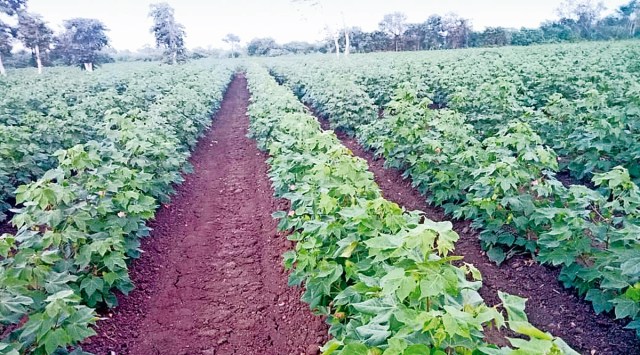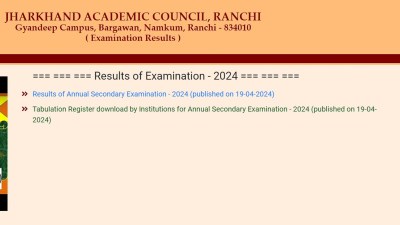- India
- International
Farmers worried due to dry spell, no rain in sight till aug 15
Bapalal Parmar, a farmer of Kukda village in Muli taluka of Surendranagar district, has not been able to sow his 200 bigha holding and is worried that castor he sowed in 30 bigha will fail if it doesn't rain soon.
 Soil surface in Dhiru Pathar's cotton field in Jaliya village of Amreli has developed cracks due to lack of moisture. (Express photo)
Soil surface in Dhiru Pathar's cotton field in Jaliya village of Amreli has developed cracks due to lack of moisture. (Express photo)With the dry spell in the state likely to stretch till this weekend, at the peak of the monsoon season, farmers, especially in Saurashtra, are worried about crops getting affected as dams and groundwater sources to irrigate their crops have not been replenished.
Bapalal Parmar, a farmer of Kukda village in Muli taluka of Surendranagar district, has not been able to sow his 200 bigha holding and is worried that castor he sowed in 30 bigha will fail if it doesn’t rain soon. “There is no water in Wadhwan Bhogavo-I dam from which we get water through canal. Nor is there enough water in borewells on my farm. Therefore, presently I am irrigating cotton (10 bigha) and groundnut (4 bigha) as there is drip installed. Castor crop will fail if it doesn’t rain in the next few days,” says Parmar.
Suresh Bhalala, a farmer in Babra village of Amreli and chairman of the farmers’ co-operative of Babra, Amrapar and Galkotdi villages, too is facing similar difficulty. “It hasn’t rain for more than two weeks now and dams and wells are empty. I am struggling to irrigate my cotton and groundnut crops in 20 bigha.”
Power supply remains erratic in Amreli, which was among the districts that saw the longest power outage post the Tauktae cyclone.
Dhiru Pathar from Jalila village in Amreli taluka, however, is thankful that the cyclone at least recharged the wells. “But power supply is very erratic and therefore, I am struggling to irrigate my cotton crop in 22 bigha,” says Pathar.

Last week, Deputy Chief Minister Nitin Patel, at a public event, expressed concern over lull in the rain mentioning how water in the Narmada reservoir was already less.
On August 5, the state government announced to release 3,500 cusec from Narmada dam and 3,000 cusec from Kadana dam on Mahi river for 15 days to help farmers of Anand and Kheda irrigate, following demands from the elected representatives.
Agriculture in most parts of Saurashtra, the cotton and groundnut bowl of the state, is rain-fed. But with the deficient rainfall, 141 major dams in the region have just 40% storage, state government data shows. While the state has recorded an average of 36.28 per cent rainfall (304 mm) of the monsoon season so far, the north Gujarat districts of Gandhinagar and Aravalli have reported an average of 25.74 % and 22.4% rain respectively. MK Jadav, secretary in the water resources department of the state government, says that this year the overall storage is lower by around 5% against the normal of 55%.
“Crops sown early might encounter low moisture levels in some districts where there is no facility of irrigation. However, dams in south and central Gujarat get bulk of their inflow during August-September. We had released some Narmada water two weeks ago for irrigation. That said, water level in Narmada dam is also not comfortable and we have to give priority to drinking water supply,” said Jadav. Dams of central and south Gujarat have 44% and 58% storage respectively, while Sardar Sarovar dam on Narmada river has 46.57% storage.
The overall storage in the state stood at 12,037 Million Cubic Metre (MCM) or 47.68% on Monday. It is over 1,455 MCM less as compared to the corresponding day last year.
On Monday, the Narmada dam, which has a Full Reservoir Level (FRL) capacity of 138.68 meters, recorded 116.45 meters with live storage of 700 MCM.
On July 25, the dam had recorded a level of 115.36 meters with live storage of 555.25 meters. SSNNL officials said that since the water year is counted from July 1 to June 30, every year, the current level of the dam is “not a concern”. But as compared to last year, Narmada dam’s gross storage is 431 MCM less.
Superintendent engineer of Ukai dam on Tapi river, H R Mahakaal, said, “This year the rainfall is less but we have one month more (of the monsoon). We have sufficient water in the dam to cater to year-end requirements for irrigation, drinking, and other uses. Some parts of Maharashtra and Madhya Pradesh received heavy rainfall and the water directly reaches Ukai dam. During last year we have supplied 270 Million Cubic Meter water (MCM) for industrial purpose, 75 MCM for drinking, 420 MCM to SMC, and 3,100 MCM for irrigation. Today live storage of water in the dam is 3,740.28 MCM.”
Regional director of IMD, Manorama Mohanty, told The Indian Express, “There is no change in the forecast as no system has developed or looks like developing by August 15. So, till August 15, there will be no major rainfall activity in the state.”
A senior officer of the agriculture department who wished to remain anonymous, said, “The talukas where there is no rain in 14-21 days, we are monitoring them. And right now the crop health is not at all cause for concern. Because the system is going to develop around August 15, and as per the crop cycle, if it rains during that period it will suffice our requirement,” said the officer.
The Kharif sowing in the state stands at 75.73 lakh or 88.52% of last three years’ average. Cotton and groundnut acreage stands at 22.40 lakh hectare (88%) and 19 lakh hectare (112%), government data shows. “Right now things are under control. If the rains do not come within the window period, there are contingence provisions, but currently there is no need to panic,” the officer said.
The groundnut crop is at pod-formation stage, while cotton has begun flowering. “Crops have started wilting in land with very low moisture-holding capacity, especially in Vinchhiya and Jasdan talukas. If it doesn’t rain within a week, yields of groundnut and cotton can be affected adversely,” Ramesh Tilala, district agricultural officer (DAO) of Rajkot, says.
“Moisture demand by groundnut and cotton remain the highest at pod-formation and flowering stages respectively. The crop situation is good till now but rain showers are needed within next five six days,” SR Kosami, DAO of Bhavnagar, the district where 50% agriculture is rainfed, said.
Apr 19: Latest News
- 01
- 02
- 03
- 04
- 05





























